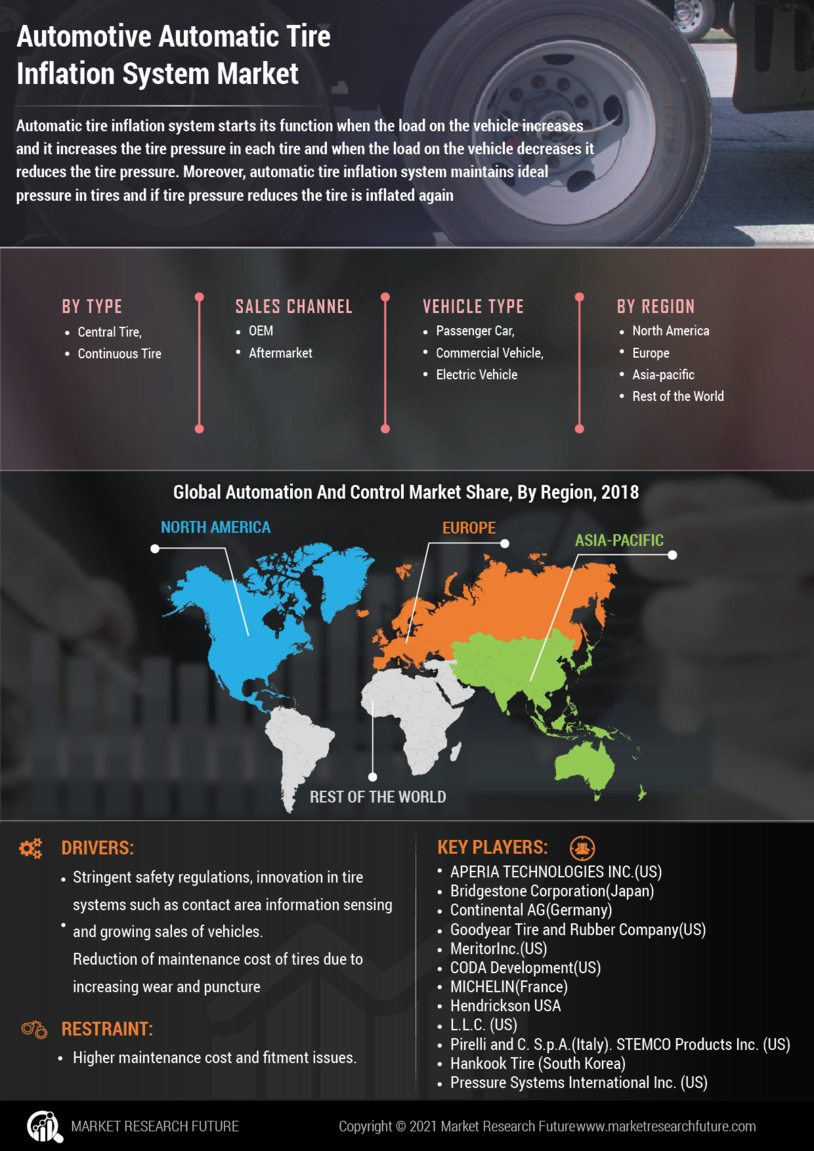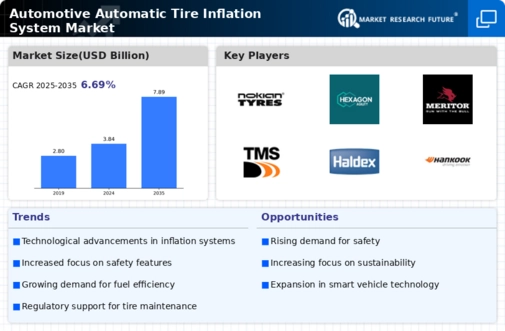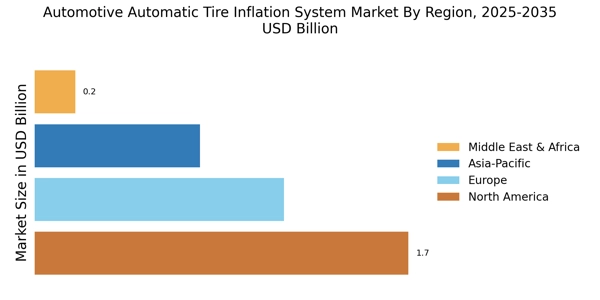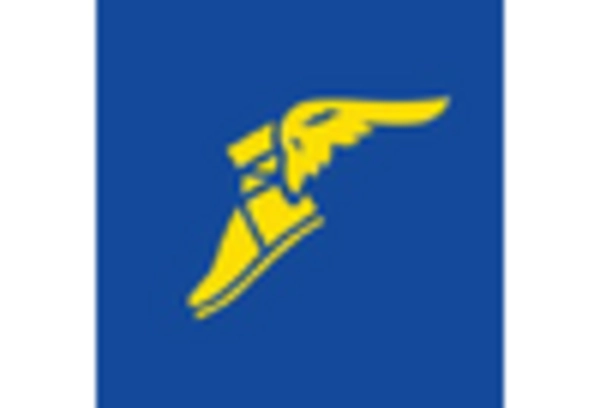Cost Efficiency
Cost efficiency is emerging as a significant driver in the Automotive Automatic Tire Inflation System Market. The implementation of automatic tire inflation systems can lead to substantial savings in fuel costs and tire maintenance. By maintaining optimal tire pressure, these systems enhance fuel efficiency, which is increasingly important to consumers and fleet operators alike. Market analysis suggests that vehicles equipped with automatic inflation systems can achieve up to 3% better fuel economy compared to those without. This cost-saving potential is likely to attract more manufacturers to invest in these technologies, thereby expanding the market. As the focus on operational efficiency intensifies, the demand for automatic tire inflation systems is expected to rise.
Regulatory Influence
Regulatory frameworks play a crucial role in shaping the Automotive Automatic Tire Inflation System Market. Governments worldwide are implementing stringent regulations aimed at improving vehicle safety and environmental standards. For instance, mandates for tire pressure monitoring systems have led to increased adoption of automatic inflation technologies. The market is likely to benefit from these regulations, as compliance becomes essential for manufacturers. In recent years, the introduction of policies promoting fuel efficiency and emissions reduction has further propelled the demand for advanced tire inflation systems. This regulatory influence is expected to drive market growth, with projections indicating a compound annual growth rate of around 10% in the coming years.
Environmental Concerns
Environmental concerns are becoming a pivotal driver in the Automotive Automatic Tire Inflation System Market. As the automotive sector faces increasing scrutiny regarding its environmental impact, the adoption of technologies that promote sustainability is gaining traction. Automatic tire inflation systems contribute to reduced tire wear and improved fuel efficiency, thereby lowering carbon emissions. Recent studies indicate that maintaining proper tire pressure can reduce a vehicle's carbon footprint by up to 10%. This growing emphasis on environmental responsibility is likely to encourage manufacturers to integrate automatic tire inflation systems into their designs. As consumers become more environmentally conscious, the market for these systems is expected to expand, reflecting a shift towards greener automotive solutions.
Consumer Demand for Safety
The growing consumer demand for safety features in vehicles significantly impacts the Automotive Automatic Tire Inflation System Market. As awareness of road safety increases, consumers are seeking vehicles equipped with advanced safety technologies, including automatic tire inflation systems. This trend is reflected in market data, which indicates that vehicles with enhanced safety features are experiencing higher sales rates. The integration of automatic tire inflation systems not only addresses safety concerns but also enhances overall vehicle performance. As manufacturers respond to this demand by incorporating such systems into their offerings, the market is poised for substantial growth, with estimates suggesting an increase in market size by 20% over the next few years.
Technological Advancements
The Automotive Automatic Tire Inflation System Market is experiencing a surge in technological advancements that enhance tire performance and safety. Innovations such as real-time monitoring systems and automated inflation mechanisms are becoming increasingly prevalent. These technologies not only improve vehicle efficiency but also contribute to fuel savings and reduced emissions. According to recent data, the integration of smart sensors and IoT capabilities in tire inflation systems is projected to increase market growth by approximately 15% over the next five years. As manufacturers invest in research and development, the potential for enhanced features and functionalities in automatic tire inflation systems appears promising, driving the market forward.


















Leave a Comment